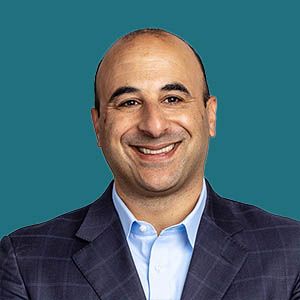Cell Therapy May Help to Address Unmet Needs in Epilepsy
Cory R. Nicholas, PhD, the cofounder and CEO of Neurona Therapeutics, discussed NRTX-1001, the company’s allogeneic regenerative neural cell therapy currently being evaluated in MTLE.
Cory R. Nicholas, PhD

Patients with epilepsy that is refractory to treatment with currently approved drugs are left with limited options. Currently available avenues for further treatment include neurostimulator devices, which typically do not result in seizure freedom, and lobectomy and laser ablation, both of which are destructive to the brain and carry serious risks and other drawbacks.
Neurona Therapeutics is seeking to address this unmet need with NRTX-1001, an investigational cell therapy product that the company expects will provide disease-modifying outcomes without brain tissue destruction. Shortly following the presentation of data from a phase 1/2 clinical trial (NCT05135091) in drug-resistant mesial temporal lobe epilepsy (MTLE) at the 2023 American Epilepsy Society Annual Meeting, held December 1-5, in Orlando, Florida, CGTLive™ spoke with Cory R. Nicholas, PhD, the cofounder and CEO of Neurona Therapeutics, to learn more about unmet needs in epilepsy and NRTX-1001 itself.
CGTLive: Can you discuss the current standard of care and unmet needs in MTLE?
Cory R. Nicholas, PhD: About 30% of people with epilepsy are multidrug resistant and without good options. That means that 30% of people are refractory to the dozens of small molecule antiseizure drugs on the market. It's been this way for decades. If you're resistant to drugs, there are a couple options. One is neurostimulator devices, which can be inserted in different places to provide some relief from seizures, but these are often palliative: They don't result in seizure freedom for most recipients, and so people are left without the desired level of seizure control and [continue] looking for other options.
Now, another option that's a little bit more invasive is to have a lobectomy procedure. These would be in individuals in whom the epilepsy is originating from 1 region of the brain that can be clearly mapped or visualized with diagnostic imaging. In these cases, the most common place for seizures to start in adults is the temporal lobe. And so in people that have drug resistant temporal lobe epilepsy, one alternative is to have a surgical lobectomy to remove the temporal lobe in the area where the seizures are starting. This is oftentimes a sclerotic hippocampus, where the tissue becomes damaged because of the repetitive seizures. That lesioned area of the brain is removed along with surrounding healthy areas of the brain as part of that procedure. While it can be effective for some people, because of the removal of such a large amount of tissue it can also result in pretty devastating neurocognitive deficits to memory and to vision and sometimes to personality. In other words it can be effective, but it has the collateral damage associated with a brain destructive procedure.
There is a slightly less invasive version of this called a laser ablation (LIT) procedure, which seeks to have less collateral damage to tissue by being a little more precise. While it's less invasive, though, it's still destructive to brain tissue and can carry with it the same effects and slightly reduced efficacy—although it's thought to be a bit safer for folks because it's less destructive.
These are really the options for people with drug-resistant seizures and, unfortunately, they're not good ones.To achieve seizure freedom, in about 50% to 70% of well-selected patients you have to undergo a procedure that's destructive to the brain and can leave people in up to 30% to 50% of cases with pretty irreversible and significant memory loss.
What is NRTX-1001 and how is it meant to address these unmet needs?
Neurona Therapeutics has developed a first cell therapy derived from human stem cells for a regenerative alternative to treat drug-resistant epilepsies where there's a clear origin of these seizures—what's called focal-onset epilepsy, where we know where the seizures start. The idea here is that NRTX-1001 is designed to put back the cells that are damaged in that part of the brain where the seizures start.
The types of cells that are missing in the disease are inhibitory cells. There's an imbalance during a seizure, where there's hyperexcitability in this part of the brain and there's not enough inhibitory tone to balance the circuit in that network of the brain. In the brain, the inhibition is provided by the key inhibitory neurotransmitter called gama-aminobutyric acid (GABA).
What Neurona Therapeutics has done is developed a cell therapy comprising neurons that provide the inhibitory GABA. The NRTX1001 cells are delivered precisely to this part of the brain to secrete the GABA where it's needed so that the cells can rebalance the circuitry and repair the circuitry, without having to destroy or remove any parts of the brain. In this way, it offers people the chance to have what's called disease modification, where we can try to eliminate the seizures, but without the collateral damage and without the adverse cognitive effects that have plagued the lobectomy procedures.
This transcript has been edited for clarity.